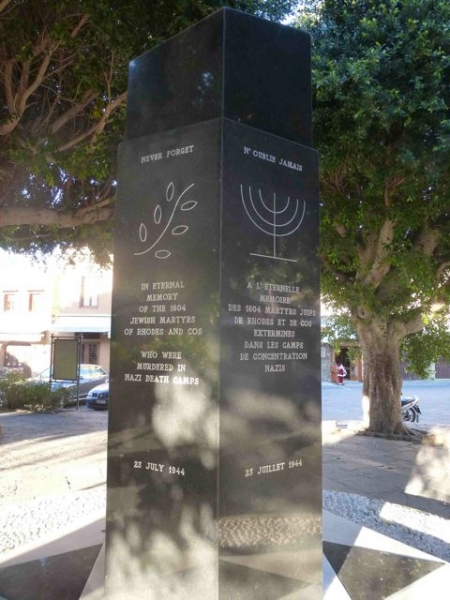It could be said that American museums primarily aim to provoke an emotional shock whereas the Centre in Lyon aims more towards understanding through intellect. The emerging discrepancies are a product of a different historiographical approach as well. When it comes to the years 1941–1945, American museums mainly address the deportation and genocide (which the American terminology calls the Holocaust, a term that the non-English speaking historiography does not accept, as in terms of the Old Testament it means a "whole burnt offering", i.e. a voluntary sacrifice through burning, and it rightly adopts the symbolic concept of Auschwitz, genocide or Shoah). This different historiographical approach does not treat the resistance in different European countries as well as other aspects of World War II, they remain distant, alien and ultimately of no interest. The appearance of the European context, the real space where the drama unfolded, here collapsed and faded. For these museums, the subject of interest in this historical period is the very Jewish tragedy.
In any case, the 1990s were the time when American society first awakened to the issue of genocide and it seems that it has already affected it. Another example of the mature interest is the USC Shoah Foundation which has been recently established in Los Angeles and which has been proceeding, at a fast pace, in the collection of oral testimonies of thousands of surviving Jews from all over the world in order to create the largest archive of audio-visual testimonies of survivors. The testimonies of ‘thousands’ of Greek Jews from Athens, Thessaloniki and from smaller cities were included in the programme of the Foundation in 1997–1998.
- In your opinion, which one of the two types of museums has a more powerful influence and the visit to which one remains more memorable?
 - I raise the question without answering it: which type of museum ultimately serves better the cause of preservation and handing down the memory of these events? Should a museum dedicated to this period influence the emotions so strongly? Is the dramatized way the most effective one in order for such a space to touch the visitor today? However, since there is a kind of "European scientific snobbery" which refers to "Americanizing the genocide" in a more insidious and arrogant way, I would not like to leave the impression that I personally share it when commenting on these museums. I just want these observations to be a starting point for a critical reflection on the issue.
- I raise the question without answering it: which type of museum ultimately serves better the cause of preservation and handing down the memory of these events? Should a museum dedicated to this period influence the emotions so strongly? Is the dramatized way the most effective one in order for such a space to touch the visitor today? However, since there is a kind of "European scientific snobbery" which refers to "Americanizing the genocide" in a more insidious and arrogant way, I would not like to leave the impression that I personally share it when commenting on these museums. I just want these observations to be a starting point for a critical reflection on the issue.
Is the answer unequivocal or does every society ultimately create the type of museum that best fits its needs? Is the "aggressiveness" of American museums (especially the one in Washington) about to overwhelm the visitor, taking the risk of giving the opposite result, namely to make the visitor leave wanting to forget about this horrible thing as soon as possible? On the other hand, how can a museum manage to send the message to people the great majority of whom, such as the hundreds of thousands of young people of Asian and Mexican origin in Los Angeles and younger Americans in general, do not have the faintest idea of the events, as they lack the sensitivity of the Europeans on this issue? Wouldn’t a "discreet" museum where the visitor has to spend much time reading and reflecting be a complete failure in this society, which is the quintessence of spectacularity and consumerism? The issue is very complex and I will leave it open.
- The epilogue in your book entitled "A Day in Memory of the Genocide of European Jews" uses as a motto Elie Wiesel’s words, "The executioner always kills twice, the second time through silence." Why has 27 January been preferred for the International Holocaust Remembrance Day?
- On 27 January 1945, while advancing through Poland, parts of the Red Army found Auschwitz without searching for it or aiming to liberate it since the liberation of the camps was not among the immediate objectives of the Allies. The Germans had emptied the camp a few days earlier, driving 58,000 prisoners before them on a "death march". Seven thousand prisoners in poor condition, wandering like ghosts and seeking nonexistent scarce food, had been left in the camp. One of them was Primo Levi, the witness par excellence of Auschwitz and the author of a humanist trilogy, Part One entitled If This is a Man. Hundreds of thousands of people died in the camp while it was functioning, finding their grave "in the air" as wrote poet Paul Celan, another person who later committed suicide like Primo Levi, and both being survivors of the death camps.